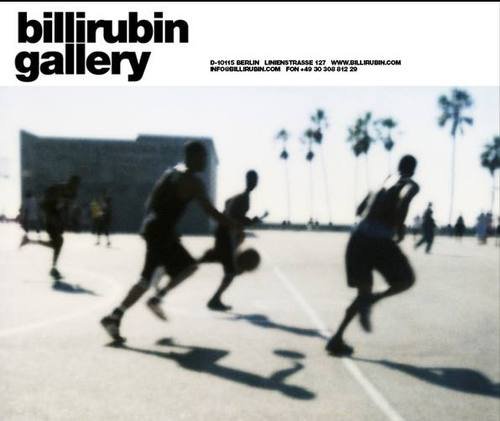Philip Glaser
dal 1/8/2008 al 3/10/2008
Segnalato da
1/8/2008
Philip Glaser
Billirubin Gallery, Berlin
Solo show

After the exhiliarating grand opening of Billirubin Gallery in the summer of 2007,
photographer and artist Philip Glaser is now exhibiting
the = second part of POLAROID SX70. The new series of works are
centered exclusiv= ely around TAGS as a derivative, and the origin, of
modern graffiti art. Th= e exhibition will open on August 2 and can
be viewed until October 4, 2008.
POLAROID SX70 Before his death in the early Seventies, twentieth
century photographer Wal= ker Evans intensively devoted his time to
Polaroid SX70 - the resulting art= work would be his last.
Fundamentally comparable with Evans' project of 1973 Philip Glaser
focuses = his latest Polaroid work on the fixation and separation of
symantic symbols= , so-called TAGS, within the boundaries of a societal
dimension. Just as ea= ch and every TAG, Polaroids represent a unique
signature work and a piece o= f art that is the expression of a
specific photographic attitude. In strong= opposition to digital
photography, Polaroids incorporate pastel colour nua= nces as well as
smooth contrasts and analogue grain that are unique to its = kind. No
other photo medium presents such fragile and haptic sensation likePolaroid SX70.
PHILIP GLASER POLAROID SX70 WORKS#2 BERLIN TAGS Philip Glaser on his
work BERLIN TAGS: "TAGS are the origin of modern graffiti and have
always fascinated me, espe= cially because I was to personally witness
the late prime-time of TAGS as w= ell the main phase of classical
graffitis in early-Eighties New York. I rem= ember the common picture
of subway trains covered in TAGS spreading symbols= and gang-messages
as they rattled through metropolitan New York, the mothe= r of todays
metropolis. Eventually gaining art status, graffiti was domesticated. Today, as a
result, urban graffiti art is subsidised and
cultivated = almost academically. TAGS, on the other hand, have
remained unchanged in th= eir rudimentary impetous. Common simplistic
name-signatures and symbols of = the Seventies, such as TAKI183 or
VO73, are still sprayed as territorial de= marcation lines of human
existence."
Working on Berlin TAGS over a period of two years, Philip Glaser has
found = a socio-culturally nurturing ground in Berlin which is similar
to the New Y= ork of the early Eighties. While he began his project
in an attempt to incl= ude classical graffiti, the artists images soon
turned increasingly basic u= ntil, eventually, graffitis in his work
represented little more than distan= t and opposing relatives to
TAGS. Nonetheless, the objective of Berlin TAGS= was not a
sociological study of society; rather, the exhibition is a artis= tic
interpretation of the strong aesthetic appeal portrayed in this unique
= form of expression. As symbolic valuesis attributed to the parallel
rise of= TAGS and Polaroid SX70, more importantly, the opposite social
ends of the = societal spectrum of the early Seventies are
documented. While TAGS embody = the rise of the subcultures,
Polaroids mark the incarnation of high-end con= sumerism. The
exhibition materialises these contrasts and establishes an ex= citing
and admirable connection between the two.
Opening reception: Saturday August 2, 7 - 10 pm
Billirubin
Linienstr. 127 - Berlin



